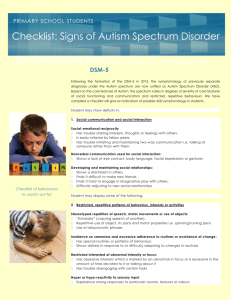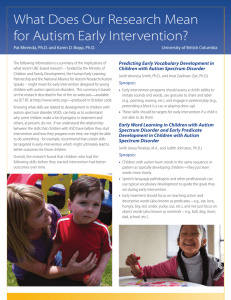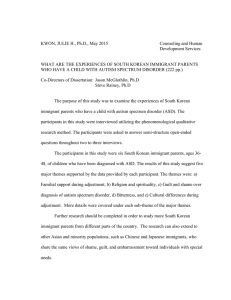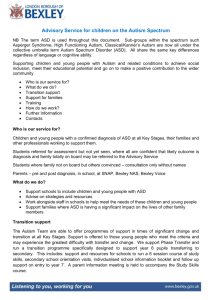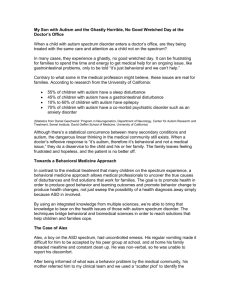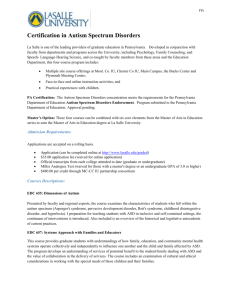Sample Need Statement - Literary Faerie Consulting
advertisement
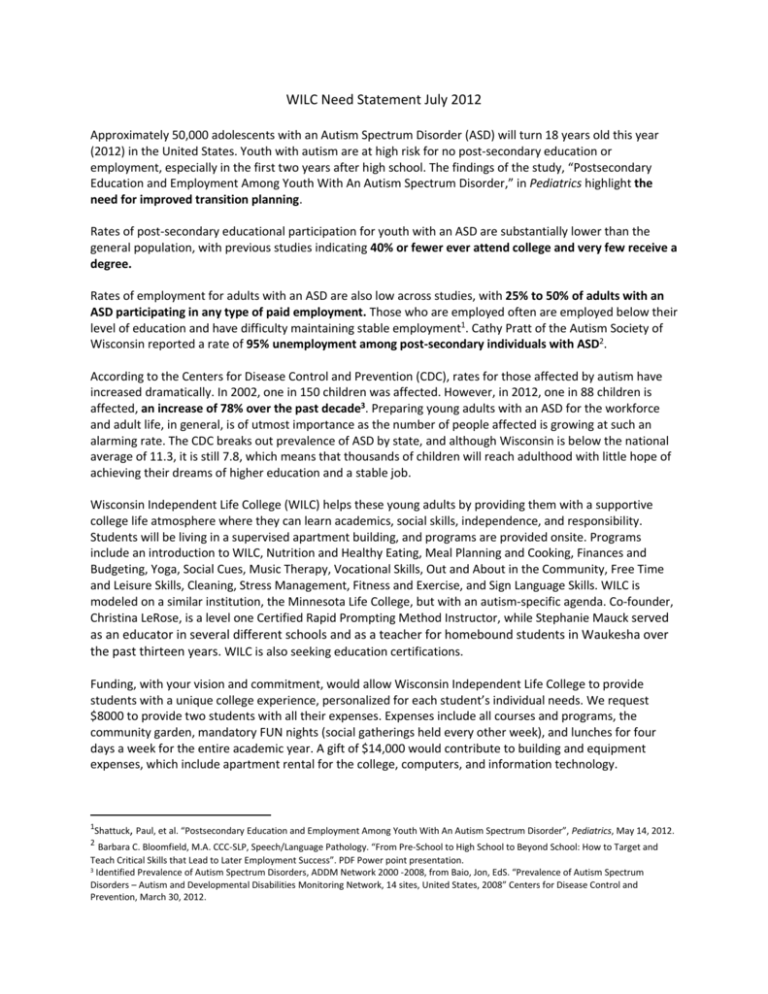
WILC Need Statement July 2012 Approximately 50,000 adolescents with an Autism Spectrum Disorder (ASD) will turn 18 years old this year (2012) in the United States. Youth with autism are at high risk for no post-secondary education or employment, especially in the first two years after high school. The findings of the study, “Postsecondary Education and Employment Among Youth With An Autism Spectrum Disorder,” in Pediatrics highlight the need for improved transition planning. Rates of post-secondary educational participation for youth with an ASD are substantially lower than the general population, with previous studies indicating 40% or fewer ever attend college and very few receive a degree. Rates of employment for adults with an ASD are also low across studies, with 25% to 50% of adults with an ASD participating in any type of paid employment. Those who are employed often are employed below their level of education and have difficulty maintaining stable employment1. Cathy Pratt of the Autism Society of Wisconsin reported a rate of 95% unemployment among post-secondary individuals with ASD2. According to the Centers for Disease Control and Prevention (CDC), rates for those affected by autism have increased dramatically. In 2002, one in 150 children was affected. However, in 2012, one in 88 children is affected, an increase of 78% over the past decade3. Preparing young adults with an ASD for the workforce and adult life, in general, is of utmost importance as the number of people affected is growing at such an alarming rate. The CDC breaks out prevalence of ASD by state, and although Wisconsin is below the national average of 11.3, it is still 7.8, which means that thousands of children will reach adulthood with little hope of achieving their dreams of higher education and a stable job. Wisconsin Independent Life College (WILC) helps these young adults by providing them with a supportive college life atmosphere where they can learn academics, social skills, independence, and responsibility. Students will be living in a supervised apartment building, and programs are provided onsite. Programs include an introduction to WILC, Nutrition and Healthy Eating, Meal Planning and Cooking, Finances and Budgeting, Yoga, Social Cues, Music Therapy, Vocational Skills, Out and About in the Community, Free Time and Leisure Skills, Cleaning, Stress Management, Fitness and Exercise, and Sign Language Skills. WILC is modeled on a similar institution, the Minnesota Life College, but with an autism-specific agenda. Co-founder, Christina LeRose, is a level one Certified Rapid Prompting Method Instructor, while Stephanie Mauck served as an educator in several different schools and as a teacher for homebound students in Waukesha over the past thirteen years. WILC is also seeking education certifications. Funding, with your vision and commitment, would allow Wisconsin Independent Life College to provide students with a unique college experience, personalized for each student’s individual needs. We request $8000 to provide two students with all their expenses. Expenses include all courses and programs, the community garden, mandatory FUN nights (social gatherings held every other week), and lunches for four days a week for the entire academic year. A gift of $14,000 would contribute to building and equipment expenses, which include apartment rental for the college, computers, and information technology. 1 Shattuck, Paul, et al. “Postsecondary Education and Employment Among Youth With An Autism Spectrum Disorder”, Pediatrics, May 14, 2012. 2 Barbara C. Bloomfield, M.A. CCC-SLP, Speech/Language Pathology. “From Pre-School to High School to Beyond School: How to Target and Teach Critical Skills that Lead to Later Employment Success”. PDF Power point presentation. 3 Identified Prevalence of Autism Spectrum Disorders, ADDM Network 2000 -2008, from Baio, Jon, EdS. “Prevalence of Autism Spectrum Disorders – Autism and Developmental Disabilities Monitoring Network, 14 sites, United States, 2008” Centers for Disease Control and Prevention, March 30, 2012.



